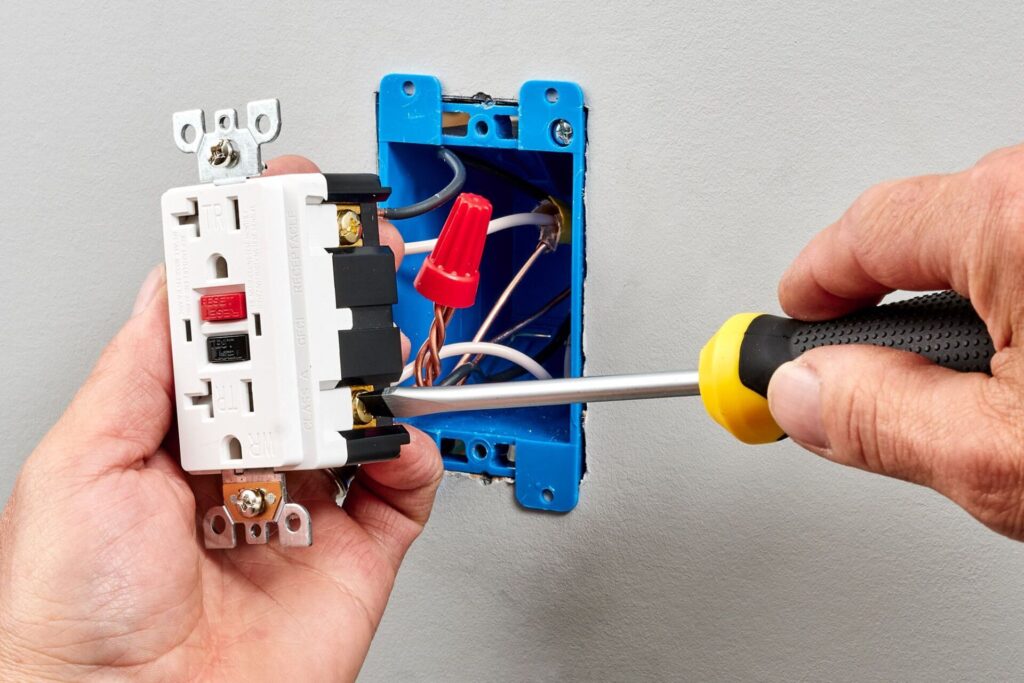- Copyright © 2025 AIbuildersinc, All rights reserved.
Sufficient wiring goes well beyond safety – it also means enhancing your home’s functionality, reliability, and ability to keep up with today’s ever-increasing power needs. The wiring in your home, seldom inspected after installation, may need an update, especially if your home is more than 40 years old. Reduce your risk of electric shocks, tripped breakers, and residential fires with updated home wiring from AI Builder Electrical.
Aluminum wiring used in the ‘60s and ‘70s, non-metallic wiring installed in the ‘40s and ‘50s, and knob and tube wiring in pre-1930s homes are well-known safety hazards, as are loose connections and frayed wires due to botched DIY alterations or wear and tear over time.
Two-prong outlets are an enormous safety hazard – for you and your electronics. Without proper grounding, electrical excesses have nowhere to go but into your devices – or you – even if you have a surge protector. Reduce shock risks by getting grounded wires and three-prong outlets installed.

Identified by the “TEST” and “RESET” buttons on receptacles, GFCIs protect against shock in high moisture areas. They are currently required in bathrooms, kitchens, laundry rooms, utility rooms, garages, spa/pool areas, unfinished crawlspaces/basements, and any electrified areas outside of your home. If you’re lacking these inexpensive, easy-to-install devices in any of these important areas, you may be in for a shocking experience.
Identified by the “TEST” and “RESET” buttons on receptacles, GFCIs protect against shock in high moisture areas. They are currently required in bathrooms, kitchens, laundry rooms, utility rooms, garages, spa/pool areas, unfinished crawlspaces/basements, and any electrified areas outside of your home. If you’re lacking these inexpensive, easy-to-install devices in any of these important areas, you may be in for a shocking experience.
Household appliances didn’t always have special plugs. But today, a 240-volt outlet is required for each oven, clothes dryer, and other heavy-duty appliance. Older 240 plug wiring features three prongs, but the most up-to-date 240 plugs have four prongs due to the addition of a ground wire for improved safety.
How many amps power your home? Just a couple of decades ago, 60-amp circuit breaker wiring may have been sufficient. However, today’s homes often need 100 to 200 amps to successfully operate all the appliances and electronics you use simultaneously, from mobile devices and flat screen televisions to your refrigerator and air conditioner. The best way to meet your home’s growing energy needs is to get upgraded breaker box wiring installed.
